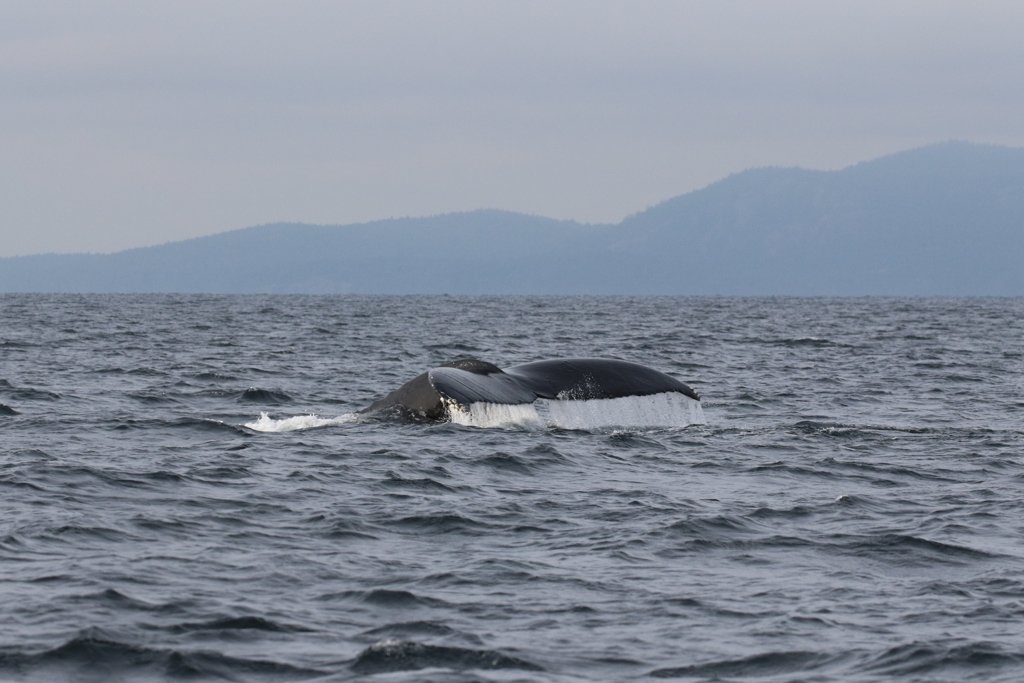November 20th - Transient Orca T123s and Barracuda the Humpback!
The sun was starting to break through the clouds as we left Nanaimo harbour for our trip on the 20th of November. Our covered vessel, Kula, travelled through the Strait of Georgia towards the Winchelsea Islands in search of a report of orca from a land-based source earlier in the day. These islands are part of the Ballenas-Winchelsea Archipelago, a group of 19 small islands located off Nanoose Bay.
Soon our tour came across a large black dorsal fin cutting through the water surrounded with the 3 smaller fins of his family. It was the T123s! This pod of transient orca contains 4 members; T123 Sidney (born ~1985), T123A Stanley (2000), T123C Lucky (2012), and T123D Darcy (2018). The sexual dimorphism in orca is visually striking when observing Stanley, a 21 year old male, travelling close to his mother and sisters. Even beside 36 year old Sidney his 6 foot tall dorsal fin doubles the size of hers. Lucky and Darcy are also female but they are not fully grown so they are even smaller than their mother.
This group of 4 orca was weaving throughout the Winchelsea islands keeping close to the shorelines. Our transient orca are often found close to shore because that’s where their primary food source, the harbour seal, spends most of their time. The orca today didn’t stop for a meal and we left them continuing to travel north.
Since we were already nestled in the Winchelsea islands we took the opportunity to check the shores for some pinnipeds (seals and sea lions). Once in search-mode again an amazing sight caught the attention of our tour; a breaching humpback! These animals weigh about 35 tons and can get up to 17m long so when they launch themselves out of the water it can be seen from quite far away. Heading in that direction they found Barracuda, a female humpback whale who was first spotted in the area in 2007, making her at least 14 years old. We know that she is female because she was seen with a calf in 2020. Having a breeding age female still present in the Salish sea is slightly unusual, since most of our humpbacks have already begun their journey south to their breeding grounds in Hawaii, Mexico, or South America. Although unusual, it’s nothing to be concerned over as every humpback is unique in when they leave, when they return, and if they will travel south at all. We are interested if we will continue seeing Barracuda and other humpbacks as we continue our tours through the winter.
Please enjoy the photos from the day taken by naturalist Rebeka Pirker.









